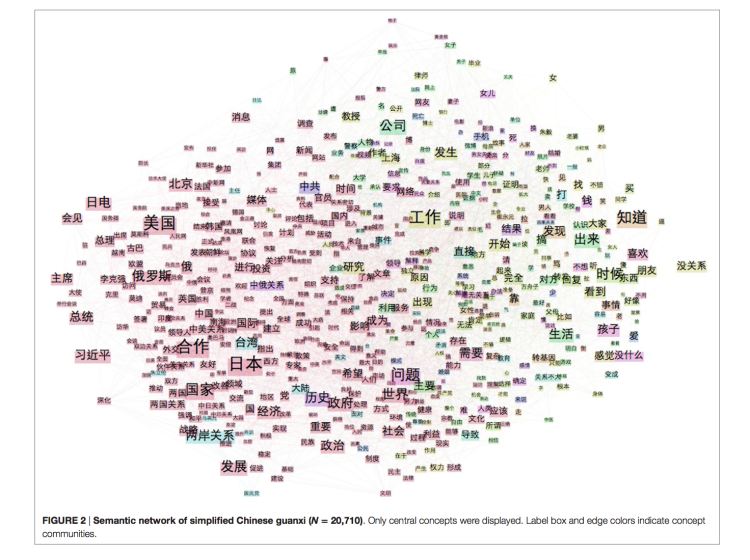About two months ago, a paper of ours with the above title appeared on Frontiers in Digital Humanities (Big Data).
This paper has emerged from my former MSc student at the Oxford Internet Institute, Pu Yan, who is currently working on her PhD in our department.
In this paper we combined a network analysis tool with computational linguistic methods to understand the differences in the ways that Guanxi is conceptualized in two different Chinese cultures (Mainland vs Taiwan, Hong Kong, and Macau).
What I like about this paper is the discussion of the results rather than anything else. Pu, with her great domain knowledge, interprets the results in a very insightful way.
The paper is available here and the abstract says:
Guanxi, roughly translated as “social connection,” is a term commonly used in the Chinese language. In this study, we employed a linguistic approach to explore popular discourses on guanxi. Although sharing the same Confucian roots, Chinese communities inside and outside Mainland China have undergone different historical trajectories. Hence, we took a comparative approach to examine guanxi in Mainland China and in Taiwan, Hong Kong, and Macau (TW-HK-M). Comparing guanxi discourses in two Chinese societies aim at revealing the divergence of guanxi culture. The data for this research were collected on Twitter over a three-week period by searching tweets containing guanxi written in simplified Chinese characters (关系) and in traditional Chinese characters (關係). After building, visualizing, and conducting community detection on both semantic networks, two guanxi discourses were then compared in terms of their major concept sub-communities. This study aims at addressing two questions: Has the meaning of guanxi transformed in contemporary Chinese societies? And how do different socio-economic configurations affect the practice of guanxi? Results suggest that guanxi in interpersonal relationships has adapted to a new family structure in both Chinese societies. In addition, the practice of guanxi in business varies in Mainland China and in TW-HK-M. Furthermore, an extended domain was identified where guanxi is used in a macro-level discussion of state relations. Network representations of the guanxi discourses enabled reification of the concept and shed lights on the understanding of social connections and social orders in contemporary China.
